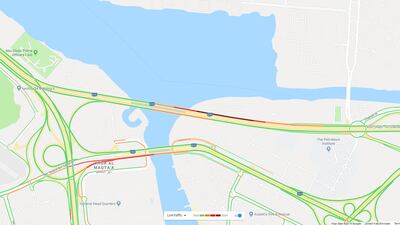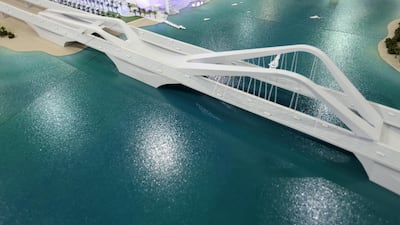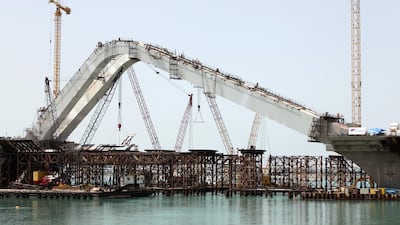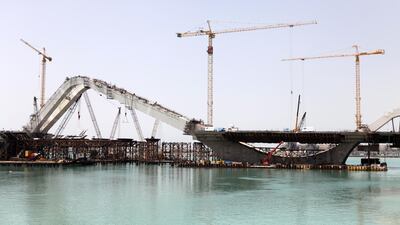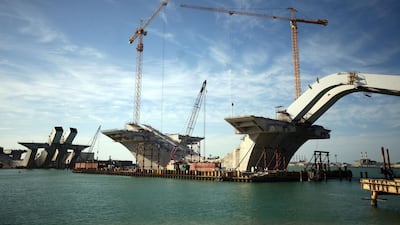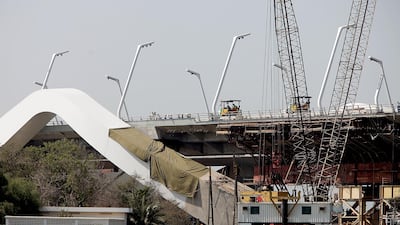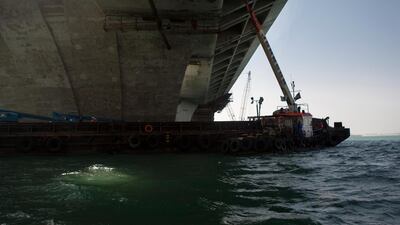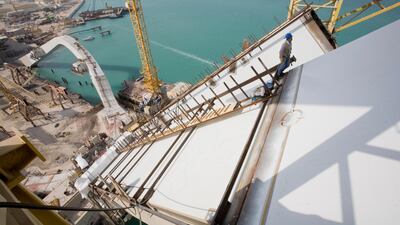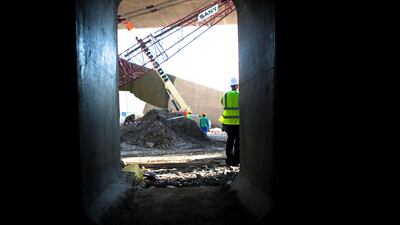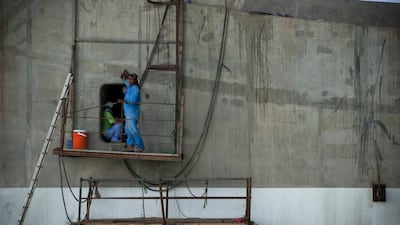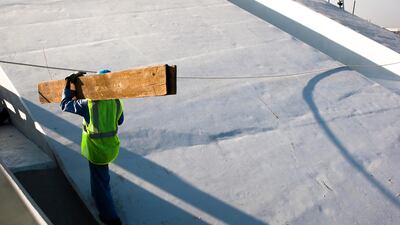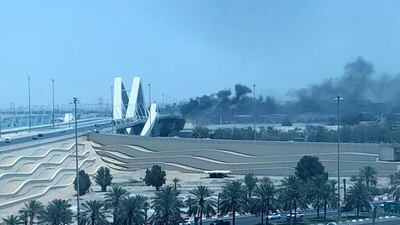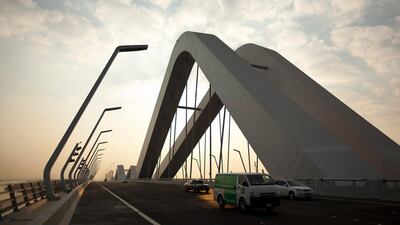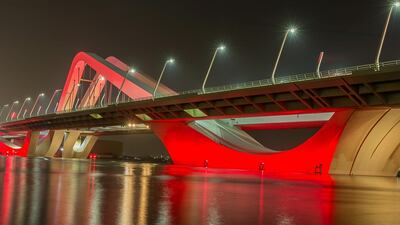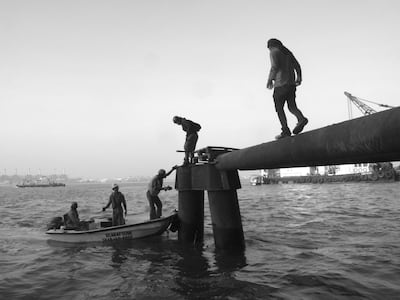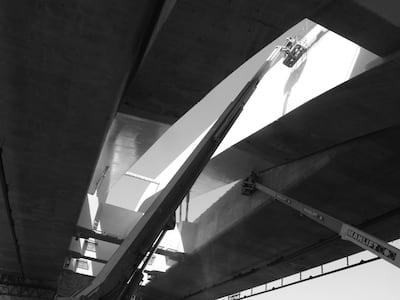Abu Dhabi marks two key development moments this month, one with a bang and the other with a quiet nod to a decade ago.
The sound and the fury will be heard on the Corniche this weekend when the Mina Plaza Towers are finally demolished on Friday to make way for redevelopment. Long-term residents will be familiar with much of the story of the towers: construction on the site began in 2007 but was halted several times over the years.
In February, it was announced they would be demolished to make way for a redevelopment of the neighbourhood’s souqs and a regeneration of the seafront area.
The towers have stood for years as concrete reminders of a future not quite realised and serve as a brooding bookend at one end of the Corniche, far away from the glasswork statement made by the Etihad Towers at the opposite end of the popular coastal road.
If redevelopment should broadly aim to balance preservation and progress, the demolition of the Mina Plaza Towers represents a step forward. Few will mourn the passing of a construction project that never came close to fruition.
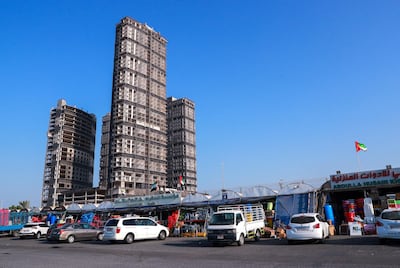
At the other end of Abu Dhabi island, the Sheikh Zayed Bridge, a monument of form and function, marks its 10th anniversary this month.
The late Zaha Hadid’s shape-shifting, wave-inspired work was years in the making and opened to traffic in November 2010, the same month Queen Elizabeth II arrived in the UAE on a state visit from the UK.
At a ceremony during her trip, the UK monarch and Sheikh Mohammed bin Rashid, Vice President and Ruler of Dubai, went on to unveil the plans for the Zayed National Museum, designed by Foster and Partners.
Ten years later, that "starchitect" moment – the inelegant portmanteau that is used to describe the world’s most famous architects – framed by the realisation of Hadid’s vision and the announcement of another piece of the huge Saadiyat puzzle, still seems breathtaking.
The bridge was one of the great works of Abu Dhabi’s early 21st-century development, as the city transformed into a destination city, economic powerhouse and cultural hub.
It is easy to underplay the bridge’s agile, weightless beauty now that Hadid’s signature piece is such a regular part of our lives.
Viewed from the roadway it offers commanding views of the channel that runs between Abu Dhabi island and the mainland, leaving most of its workings unseen. The perspective from Maqta Bridge tells another story, revealing Hadid’s futuristic swoops and sculptured curves that stretch over hundred of metres of land, air and water.
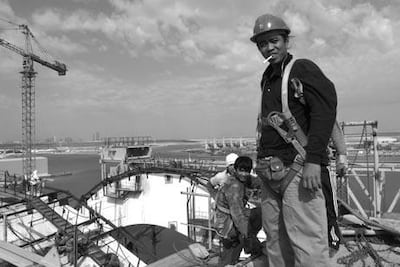
Roy Lengweiler was one of the first employees on site when the project began to be brought to life in January 2003. An engineer by trade, he was there when it opened, too. A career bridge builder, he would always say he was only one part of a much bigger effort to bring Hadid’s drawings into reality. He would, however, end up playing a unique role in the build.
Mr Lengweiler spent around 2,000 days on site, taking a camera with him most of the time to record work in progress, so that he could use those images in meetings convened to discuss this project of intense detail.
By the time I met him in late 2010 he had amassed thousands of images, which detailed every part of the construction process from start to finish. It took a few rounds of cajoling and pleading to persuade him to let us tell his story and to publish his pictures, which were later the subject of a temporary exhibition at a gallery in the city. The images are now held by Akkasah, the New York University Abu Dhabi's collection of regional photographs.
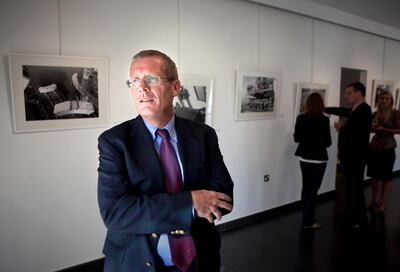
Looking back, it is not hard to see why his pictures struck a chord. Mr Lengweiler’s images weren’t just snapshots of a work in progress, they also painted a picture of vast human endeavour.
The process of bridge-building became an altogether more lyrical narrative in those frames. As thousands of workers toiled away on a project that was designed to connect people and build a literal pathway between communities, the work itself also helped those same employees build better lives for the families they had left behind to go to work. Each part of the bridge’s structure seemed to support and enhance the next one, just like the photographs themselves.
A call to Mr Lengweiler this week at his home in Switzerland to speak about the bridge and his photographs offered a chance for both of us to catch up. We hadn’t spoken in years. Even today he says Hadid’s work is “unparalleled in complexity”.
Our conversation also served as a chance to reflect and think about the scale of the Sheikh Zayed Bridge and the transformational power of development and progress.
Abu Dhabi residents will be reminded of that power once again on Friday when the Mina Zayed Towers are levelled to make way for the start of another new chapter in the city’s story.
Nick March is an assistant editor-in-chief at The National
